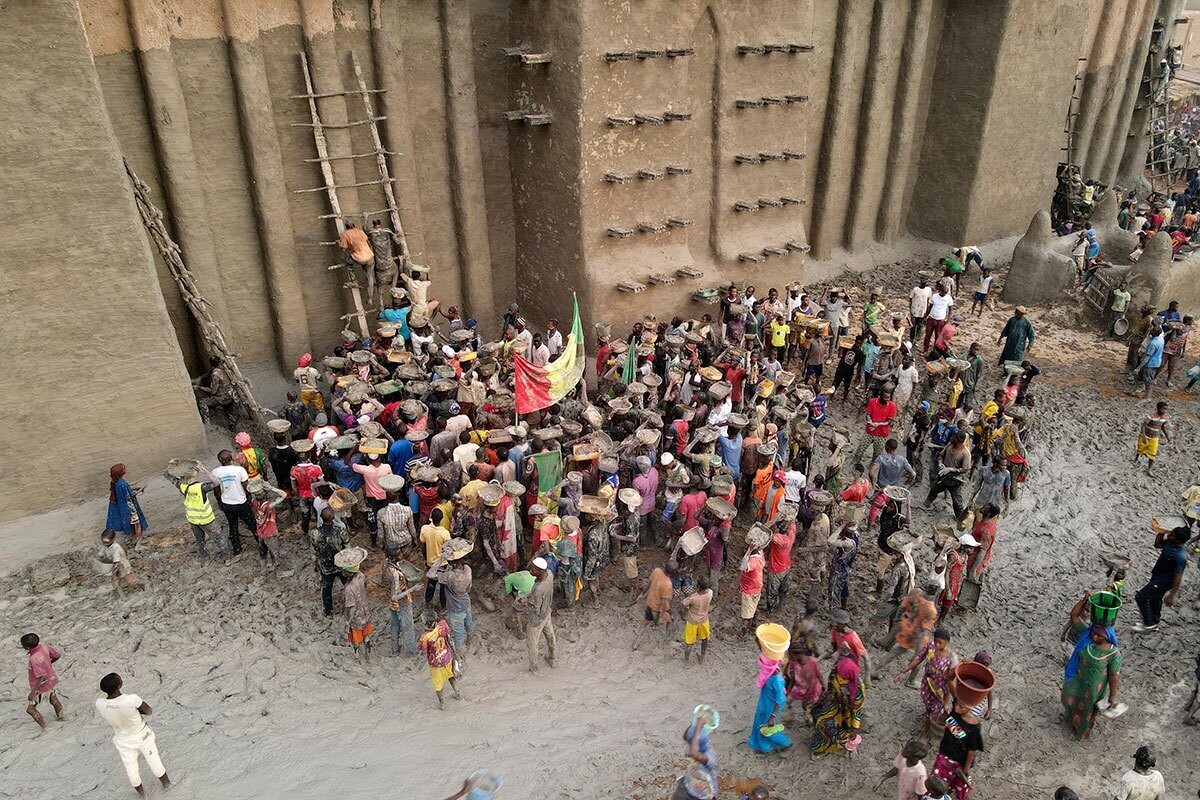Muslims in Mali Re-Plaster World’s Largest Mud-Brick Building (+Video)


The annual re-plastering of the mosque was held with the participation of a large number of people.
It is an important step in maintaining the integrity of the world’s largest mud-brick building which has been on UNESCO’s World Heritage in Danger list since 2016.
The mosque and surrounding town, a historical center of Islamic learning and sister city to the more widely known Timbuktu, were added to the list due to ongoing insecurity in the center of the country where Djenne is located.
It is a large brick or adobe building in the Sudano-Sahelian architectural style. The mosque is located in the city of Djenné, Mali, on the flood plain of the Bani River.
The first mosque on the site was built around the 13th century, but the current structure dates from 1907.
As well as being the center of the community of Djenné, it is one of the most famous landmarks in Africa.
The Republic of Mali is a landlocked country in West Africa. it is the eighth-largest country in Africa.
The majority of Mali’s population is Muslim.
Source: Africa News









